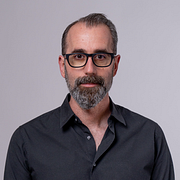Artistic Resources for Powerful Branding Design
Differences between Design and Fine Art
A course by Adam G , Creative Design Studio
About the video: Differences between Design and Fine Art
Overview
“Have you ever wondered... what is art, what is design, and if they can’t just get along? During this lesson, I will talk about the main differences between art and design.”
In this video lesson Adam G addresses the topic: Differences between Design and Fine Art, which is part of the Domestika online course: Artistic Resources for Powerful Branding Design. Learn how to create impactful branding and a strategic visual identity by incorporating fine art and artistic methodologies to your process.
Partial transcription of the video
“ Differences Between Design and Fine Art In the last lesson, you learned about me and my inspirations. Now, let's talk a bit more about the different objectives of art versus design and how they differ. The purpose of this course is to show you how to take a logo and reduce it within an inch of its life to its core, and then inject all new life into it and make it something dynamic and visually stunning. Just because a logo is minimalist and reduced, it doesn't mean it has to be static or mundane. You can inject a lot of life into it by establishing certain boundaries around it. As designe...”
This transcript is automatically generated, so it may contain mistakes.
Course summary for: Artistic Resources for Powerful Branding Design
-
Category
Design -
Areas
Branding & Identity, Graphic Design, Logo Design

Adam G
A course by Adam G
Adam G is the co-founder and creative director of TRÜF Creative, a Los Angeles design studio specializing in visual identity and illustration. He has designed identities and visuals for adidas, DreamWorks, University of California, Indiegogo, and countless other companies that span from arts and media, tech and finance, to culture and education.
Prior to starting TRÜF Creative in 2006, Adam was a creative director at advertising and marketing agencies in New York City working for companies like American Express, HP, Citibank, Showtime, and Kraft. After 15 years of design, strategy, positioning, internal politics, and way too many conference calls, he finally realized that his true passion was creating visual identities where artfulness and strategy could coexist. He calls his minimalist style of visual design “Messy Modernism,” born from his love of geometry, patterns, negative space, Bauhaus, Miró, and a little too much caffeine.
- 97% positive reviews (29)
- 910 students
- 14 lessons (1h 39m)
- 17 additional resources (3 files)
- Online and at your own pace
- Available on the app
- Audio: English
- Spanish · English · Portuguese · German · French · Italian · Polish · Dutch · Turkish · Romanian · Indonesian
- Level: Beginner
- Unlimited access forever
Category
Areas


